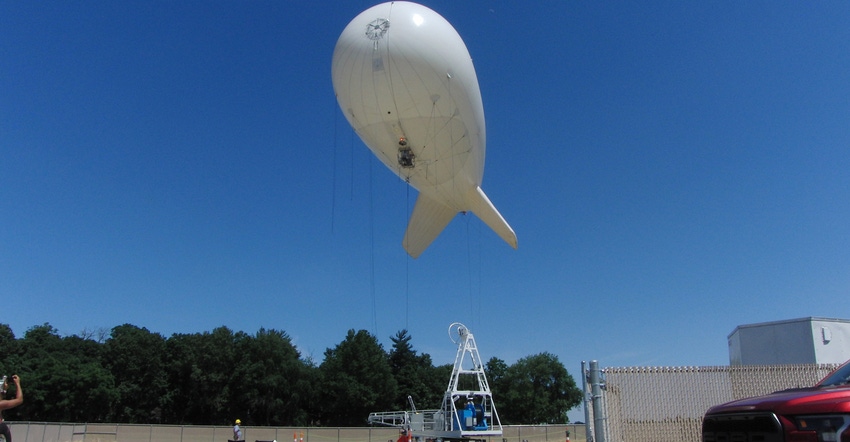January 31, 2022

A floating aerostat stationed 1,500 feet in the air may someday help provide a solution to Indiana’s rural connectivity needs. The Wabash Heartland Innovation Network, known as WHIN, is exploring possibilities for supplying internet in hard-to-reach places using an aerostat.
According to Jason Tennenhouse, vice president of strategy and design at WHIN, the aerostat will help speed up the adoption of innovation when it comes to wireless connectivity. The aerostat is currently used for research purposes across WHIN’s 10-county region, and it will remain in the research and development phase for the foreseeable future.
What is an aerostat?
The aerostat is a durable blimp composed of multilayer patented material, fixed to the ground with a patented Kevlar cable. Antennas and cables attached to the aerostat can be stationed higher in the air and can transmit signals to locations not reached by existing hardware.
Aerostats have been around for quite some time. They typically have been used in emergency situations, such as wartime or natural disasters, as a quick fix to supplying internet. However, the research that WHIN is conducting is the first use of an aerostat as a long-term connectivity solution.
“What we’re really doing is creating a research pathway where other people can come with their antennas and their experiments, they can connect to our network, and they can discover new technologies to improve wireless transmissions,” Tennenhouse says.
The primary objective of the aerostat is for commercial applications, such as farms and factories. The antennas on the aerostat can transmit high speeds and connect to sensors out in the field, and signals are sent out from the antennas every couple of minutes. The research that WHIN is conducting will focus on the telecommunications payload, ground control and functionality of the aerostat itself.
“We exist to support research and education and better quality of life for the people of Indiana,” Tennenhouse says. The connectivity achieved using the aerostat could someday help further this goal held by WHIN.
What is the potential?
Aside from providing increased connectivity, the aerostat could benefit Indiana’s growing technology industry.
“The goal is to usher in a new generation of super-high-tech hardware and software solutions in the Internet of Things, or IoT, space from all over the country and bring them to Indiana,” Tennenhouse explains.
WHIN has a focus on IoT technology to help farmers and families adopt new technologies, but the organization also has a goal of bringing tech companies into Indiana to help with this solution.
For now, Tennenhouse would like to find growing companies who can specialize in solutions for rural connectivity in Indiana specifically.
“If we get lots of companies doing that, then all of those companies will be sharing ideas with each other, and we could maybe, someday, make Indiana the Silicon Valley of the IoT revolution,” he concludes.
Lund is a student in agricultural communication at Purdue University.
You May Also Like




